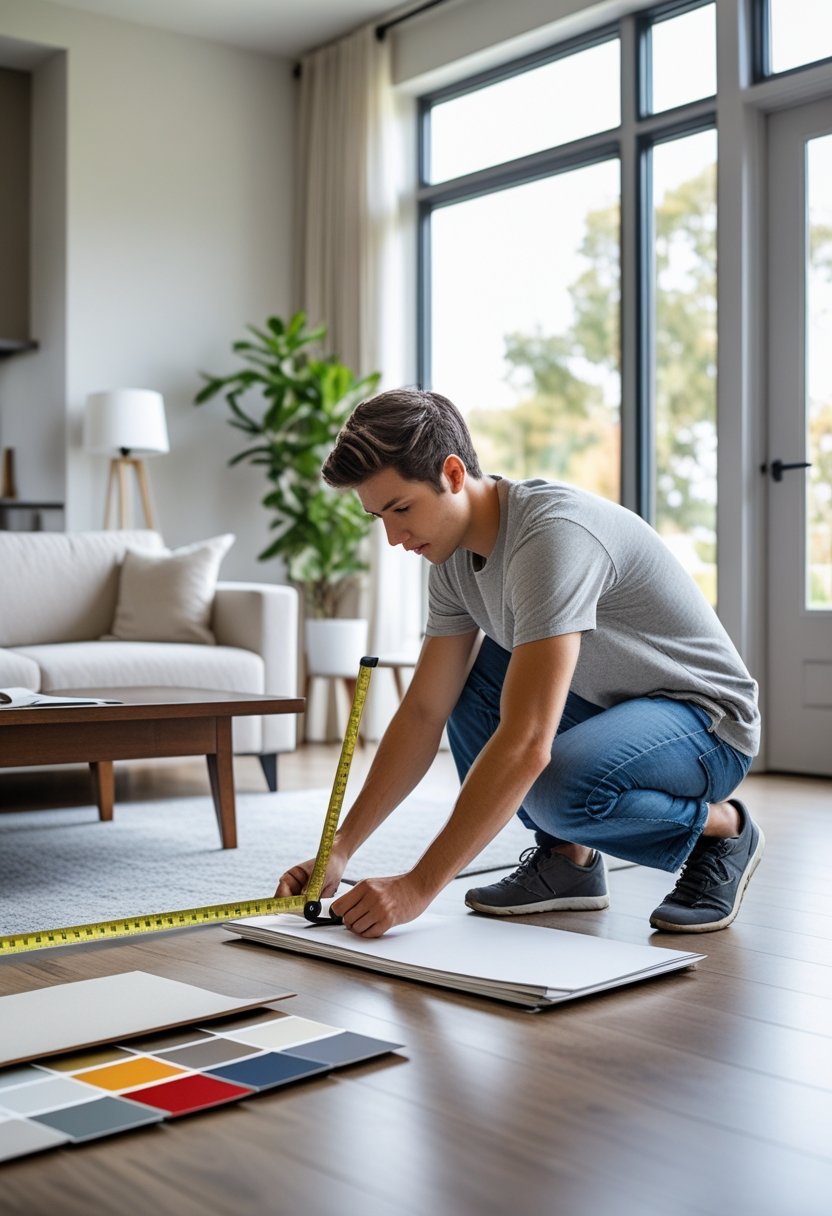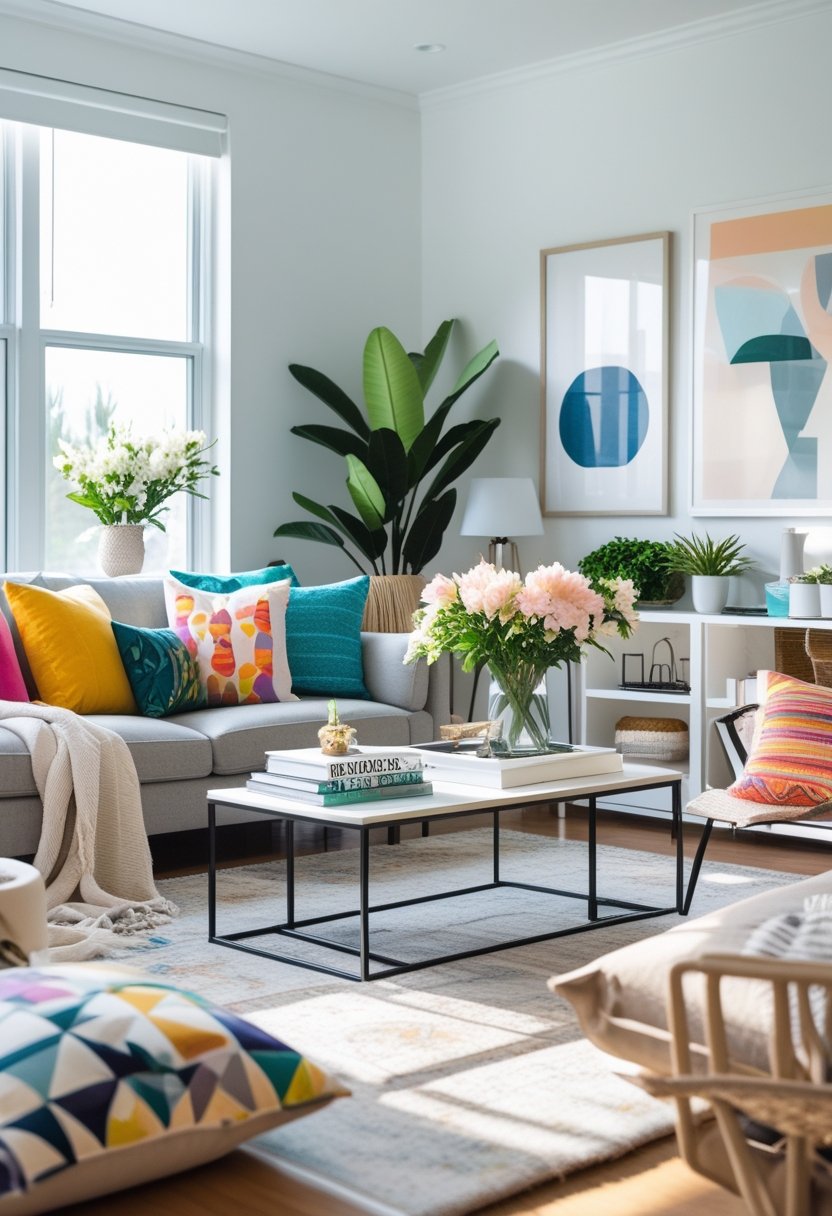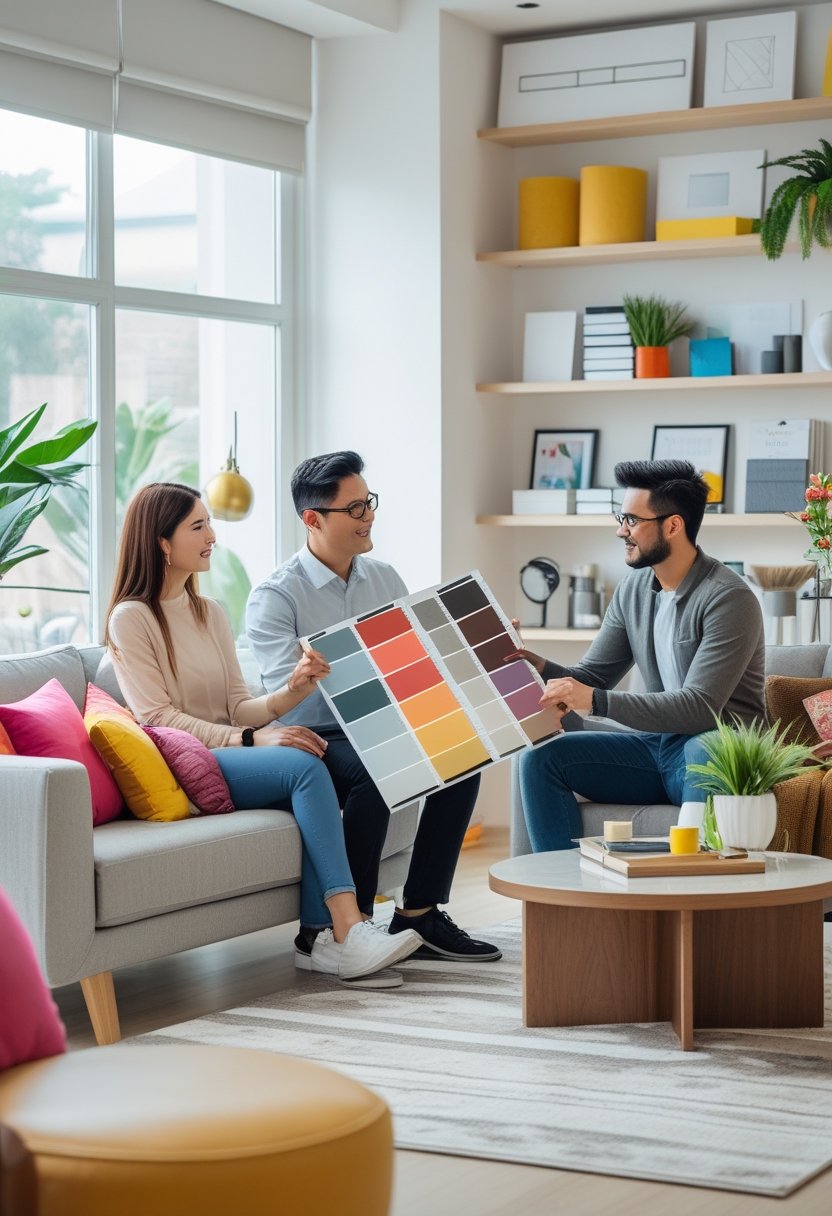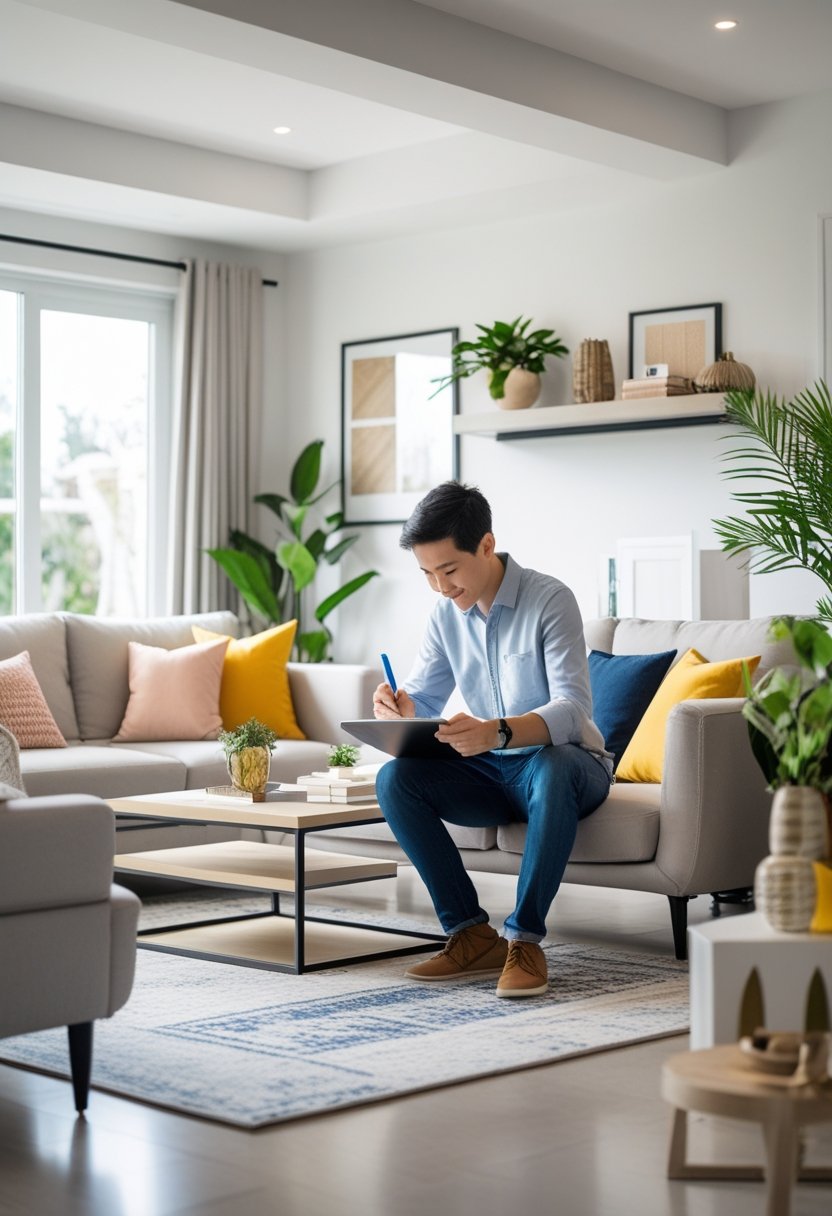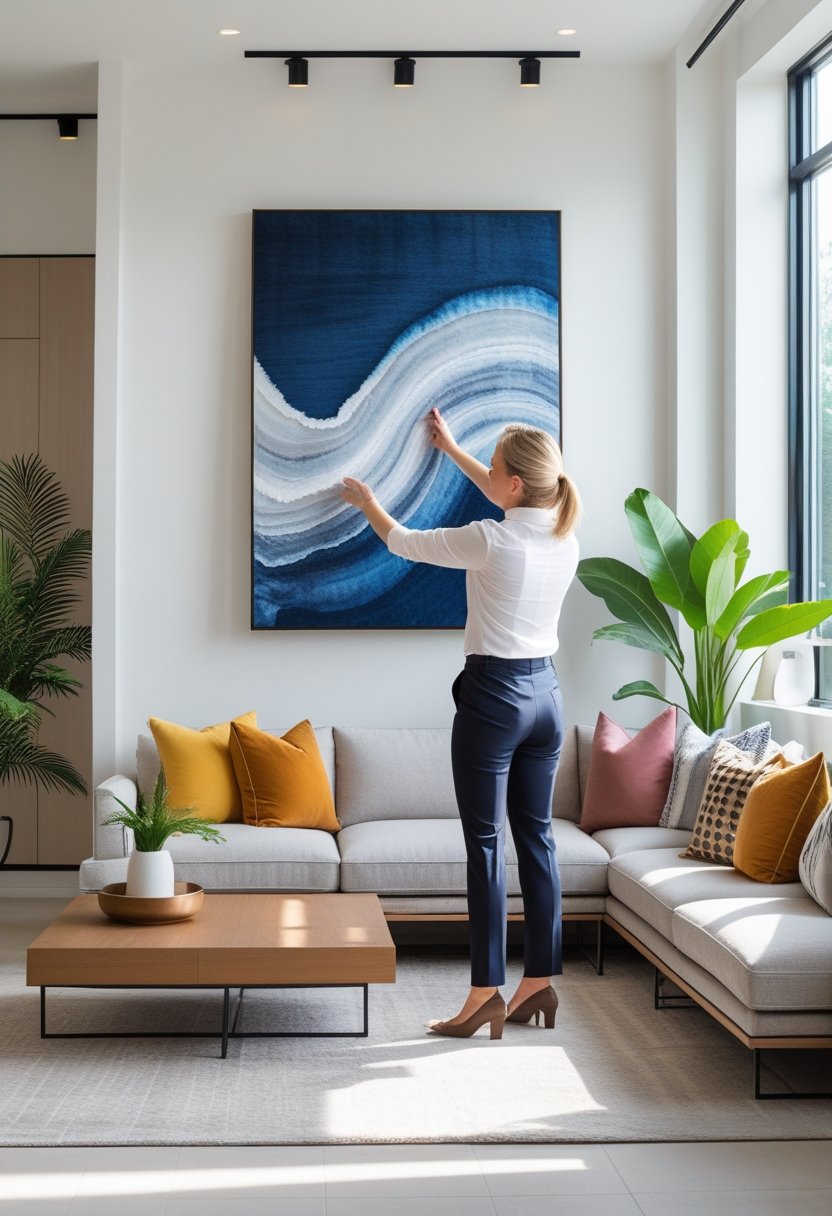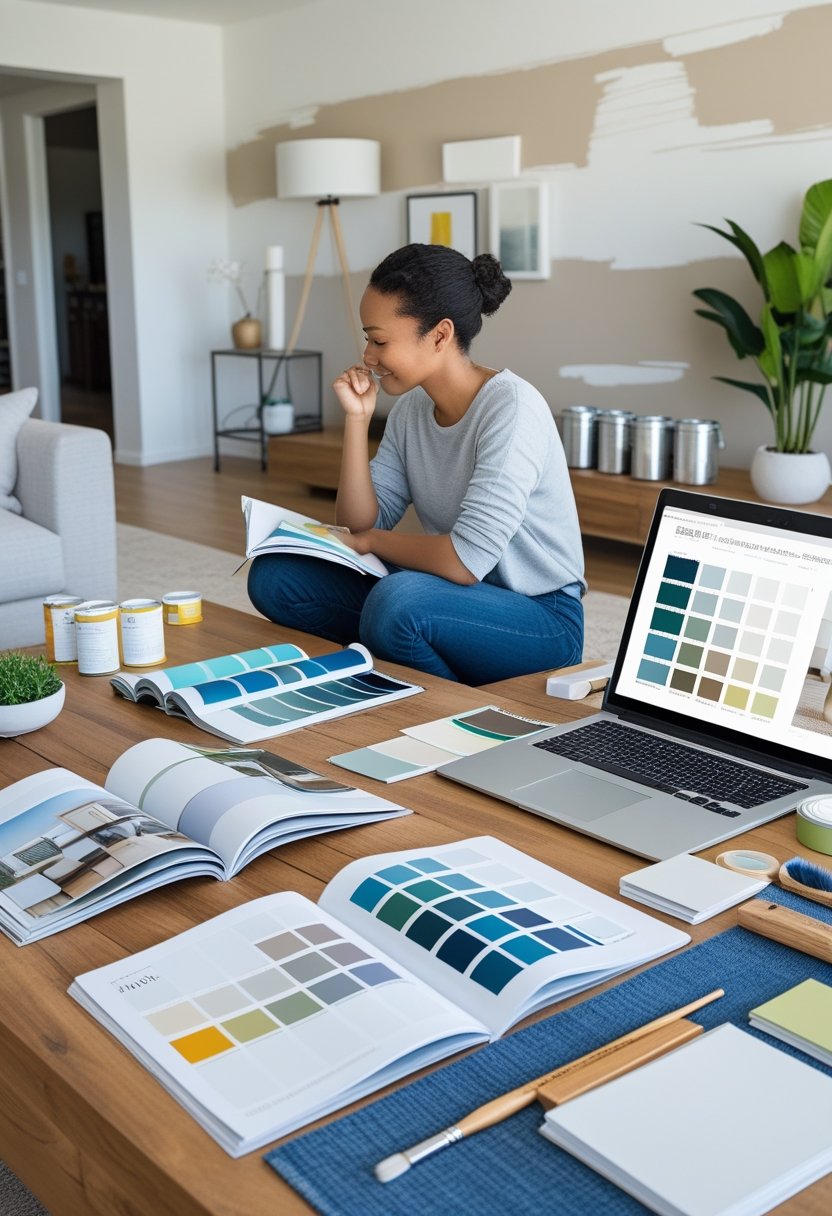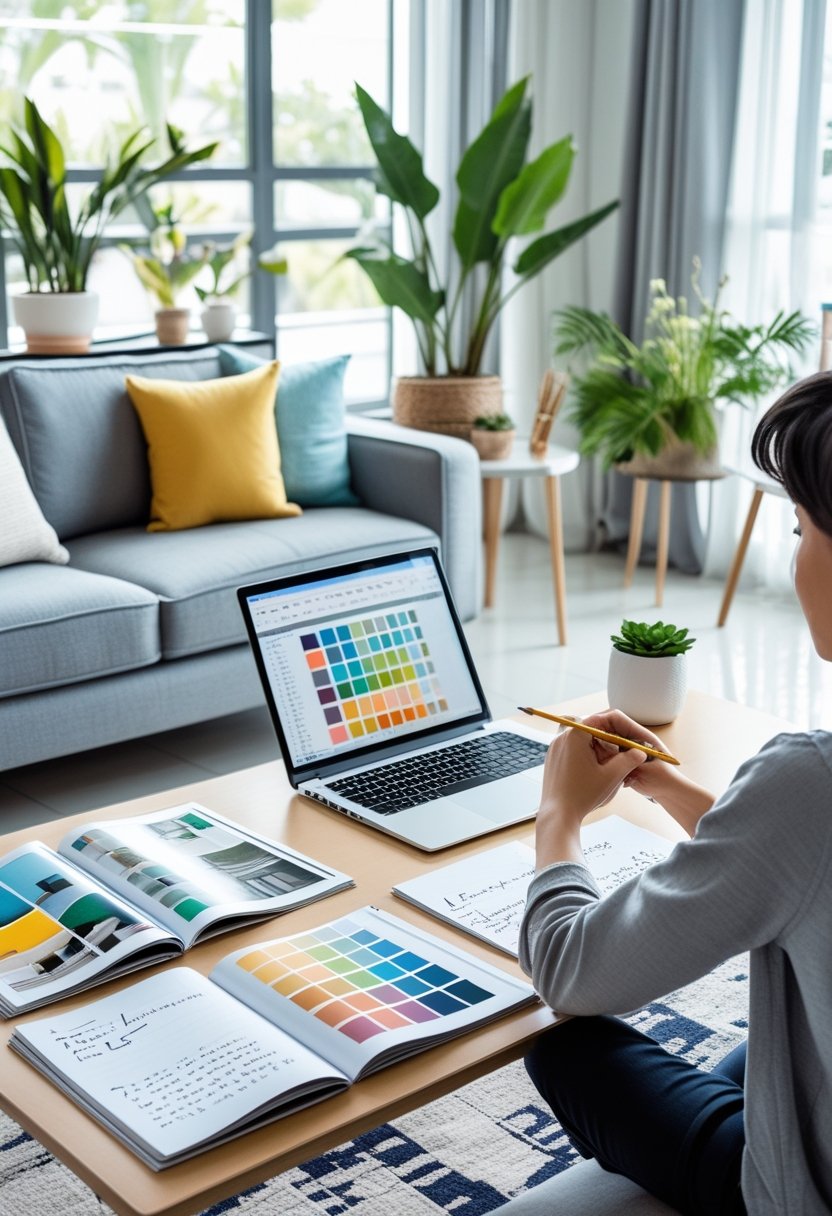When I start a decorating project, I often see people overlook one crucial step that can make all the difference in how a space feels and functions. This step is easy to miss because it doesn’t involve buying anything or picking out colors right away.
The first step to decorating is about setting a clear direction before making any decisions. Without it, you risk ending up with a room that looks good but doesn’t feel right or work well for your needs. Understanding this early on simplifies the process and improves the final result.
Define Your Personal Style Clearly
I believe the most important step in decorating is to define my personal style clearly. Without this foundation, choices can feel random or disconnected. Knowing what resonates with me helps me create a space that feels authentic and comfortable.
To uncover my style, I start by gathering things that inspire me. These can be images, objects, or colors that I’m drawn to consistently. Reflecting on why these items appeal to me reveals the mood and vibe I want in my home.
I also look at my wardrobe for clues. The colors and fabrics I choose in clothing often mirror what I prefer in my space. This simple step helps me align my decorating style with my identity.
By being deliberate and thoughtful, I avoid skipping this crucial step. Defining my style gives me confidence and clarity in selecting furniture, colors, and décor. It’s a practical way to make my home a true reflection of who I am. For more insight, consider following a simple process to identify your decorating style.
Set the Desired Mood or Feeling
The very first step I take when decorating is deciding on the mood or feeling I want the space to evoke. This feeling acts as a foundation for all other choices, from colors to furniture styles. Without this clarity, the design can feel disjointed or unclear.
I focus on how I want to feel when I enter the room. Do I want calm and cozy, energetic and bright, or elegant and refined? Defining this early helps guide decisions and keeps the space consistent.
This mood doesn’t need to be overly specific or rigid. It’s more about an overall atmosphere that resonates with me. Once I have this feeling pinned down, it becomes easier to choose elements that support the vibe I want to create.
If you want to explore this idea more, The Very First Decorating Decision You Need to Make for Any Space goes deeper into how mood shapes the entire design process.
Create a Mood Board with Selected Images
The next step I take in decorating is to create a mood board. This helps me organize my ideas visually by gathering images that reflect the style, colors, and textures I want. It gives me a clear direction instead of relying on scattered thoughts.
I start by collecting images from magazines, websites, or photos I’ve taken. Sometimes I begin with just a few key images and add more as my vision becomes clearer. This process lets me see how different elements work together.
Using tools like Canva makes assembling a mood board simple. I drag and drop images onto a digital canvas, arranging them until I get the right balance. This method helps me test different combinations before making any purchase or commitment.
The mood board is flexible, too. I update it as my ideas evolve, making sure everything fits my intended look. For me, this step prevents mistakes and keeps the project focused on one cohesive style.
You can try this approach to avoid confusion and ensure your decorating decisions feel intentional and well thought out. For more guidance, see how to make a mood board with expert tips.
Identify Key Functional Needs for the Space
The first step I take when decorating is to clearly define what the space needs to do. This means understanding the main activities that will happen there. Without this, it’s easy to choose items that look good but don’t support how the space is used.
I list the functions the room must serve. For example, is it a living room primarily for relaxing, entertaining, working, or all three? When I’m clear on this, I can focus on furniture, lighting, and layout that support those uses.
I also consider who will use the space and how often. Spaces used daily need durable, comfortable elements. Spaces used less often might allow for more decorative choices. This process helps me avoid design that feels pretty but impractical.
By starting with functional needs, I make sure the design serves its purpose. This step is crucial and often overlooked, yet it shapes every decision that follows. For more detailed advice on this approach, you can visit this guide on the essential phases of decorating a space.
Establish a Consistent Color Palette
The first step I take when decorating is to establish a consistent color palette. This helps the space feel connected and purposeful, rather than chaotic. It sets a foundation for every design choice that follows.
I follow the 60-30-10 rule to balance colors effectively. Using 60% for the main color, 30% for a secondary one, and 10% for an accent ensures the room feels harmonious without being overwhelming. This simple guideline keeps the palette grounded.
When working with existing finishes like flooring or countertops, I consider their tones carefully. These hard finishes limit my starting point, helping me avoid clashes and maintain a cohesive look. It makes choosing complementary colors more straightforward.
Consistency is especially important in open spaces. Using the same palette throughout helps the eye flow naturally from one area to another, creating unity across the entire home. It avoids a disjointed feel.
I also like to add small doses of different shades and hues within the palette. A little variation keeps the space interesting and dynamic without losing harmony. This approach feels natural and balanced in everyday life.
For more detail on keeping colors consistent, check out tips on creating a consistent color palette for your home.
Prioritize Big Impact Pieces First
When I start decorating, I focus on the big pieces that anchor the room. Items like sofas, beds, dining tables, and rugs set the foundation for the space. These pieces create the style and function I want before adding smaller décor.
Choosing quality for these foundational items is important. I invest in durable furniture that fits the room’s size and layout. This approach helps avoid frequent replacements and keeps the design consistent.
After selecting the main pieces, I layer in accessories gradually. Smaller items like pillows, lamps, and art personalize the space without overwhelming it. This process lets me adjust as I live in the room and understand what it needs.
Focusing on the big impact pieces first also streamlines the budget. I know where to spend wisely and where I can save on less critical décor. This balance helps me build a room that feels complete and practical from the start.
For more insight on building a room around these key pieces, see what designers prioritize first in decorating.
Consider Room Layout and Flow
When I start decorating, I always focus on the room’s layout first. The placement of furniture isn’t just about fitting pieces in—it’s about how easily people can move through the space. Clear pathways avoid clutter and make the room feel open.
I pay close attention to how each area functions. A living room needs a balance between seating for conversation and enough space to walk around comfortably. If the flow feels off, the room can quickly become frustrating rather than inviting.
I find it helpful to visualize daily activities in the space before adding decor. This way, I ensure furniture supports those activities without obstructing movement. Keeping this in mind prevents common mistakes like overcrowding or awkward arrangements.
Thinking about flow early allows me to choose decor that enhances the room without sacrificing practicality. You can read more on how to get this step right in detail at Polished Habitat’s guide on The First Step to Decorating.
Understanding the Importance of Preparation
Preparation is the backbone of any decorating project. It sets the stage for everything that follows, affecting both the appearance and durability of the finished room. Ignoring this step leads to avoidable mistakes and wasted effort.
How Skipping the First Step Affects Results
When I skip preparation, such as clearing the room or fixing imperfections, the final look suffers. Paint may peel or crack because surfaces weren’t cleaned or primed properly. Furniture left in the way risks damage and makes the process inefficient.
The room might look okay initially, but flaws show sooner. You end up doing extra touch-ups, which costs more time and money. I learned that spending extra time in preparation prevents headaches later and improves the overall quality of the work.
Common Misconceptions About Decorating Foundations
Many think decorating begins with choosing colors or furniture, but the real foundation is preparation. Some assume it’s just “cleaning” or “moving stuff” and skip the detailed work like sanding walls or repairing drywall.
Preparation includes tasks such as:
- Removing furniture or covering immovable pieces
- Repairing cracks or holes in surfaces
- Sanding and priming walls
- Using proper tools and materials to address problem areas
I see that understanding these steps is crucial for anyone who wants a lasting, professional result. It’s not just busy work—it’s essential groundwork.
For more on this topic, see the detailed discussion on the importance of preparation from HomeForce.
Building a Solid Decorating Strategy
Starting with a clear plan helps prevent costly mistakes and cluttered designs. It requires setting priorities, understanding your space, and knowing how your choices interact over time.
Mindset Shifts for Lasting Success
The most important mindset change is to focus on long-term satisfaction rather than quick fixes. I’ve learned that patience pays off when I prioritize function alongside style.
I also approach decorating as a process rather than a one-time event. This means allowing myself to adjust the plan as I live in the space and gain clarity on what works.
Another shift is to embrace editing. I remind myself to avoid overbuying by choosing fewer, better-quality pieces that serve multiple purposes. This reduces clutter and creates a cohesive look.
By prioritizing these mindset shifts, I build a decorating strategy that stands the test of time rather than trends. For practical advice on starting right, see the approach outlined in this first step to decorating.

Hi, Ehtesham Here, I like to upload content about fashion and scents, and I love sharing ideas. My goal is to help others in finding outfits and Scents.

